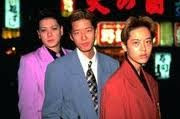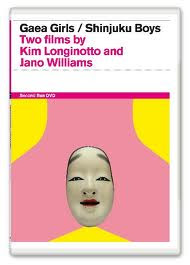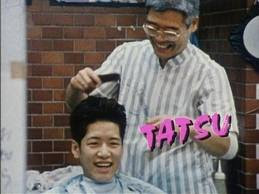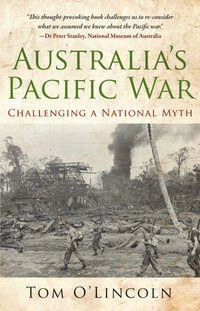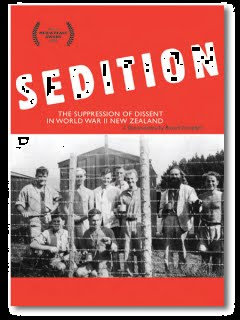
David Burton is most likely New Zealand’s leading food critic; whatever that exact status, it’s certain that his books and wide-ranging writing on food – deeply informed, careful, grounded in decades of research and careful reflection – mark him as a major figure in contemporary food writing in English. His eminence and exemplary status, then, offer reasons to read his works following what the narratologists call a symptomatic interpretation, looking for the ideological and political codes they unwittingly blurt out.

Burton’s prose – with its arch mannerisms, its laboured wit, and the carefully feigned casualness with which it constructs our image of the curmudgeonly implied author – offers suggestive images and fragments, clues to the ideology which it serves. In the era of what Mark Davis calls “the decline of the literary paradigm” and the rise of the celebrity chef, careful attention to the writing of food writing may present political insights of the kinds we used to demand from critics reading literary novelists. If Jamie Oliver’s Mockney gushing over the dishes he prepared for Blair and Berlusconi stands now as a record of one strain of New Labour’s elitist vulgarity, Burton’s concerns follow longer-term shifts in consumption and class society.
Burton’s highest accolade is that he finds food “authentic.” I started, after returning to Wellington last year, keeping clippings from each time his columns used the word, but it soon became clear how pointless the task was; the weeks when ‘authentic’ or ‘inauthentic’ didn’t appear were rare enough to seem remarkable in themselves. “Authentic” food is sometimes followed by checks on the racial purity and authenticity or otherwise of restaurant owners or staff: a piece in Cuisine magazine last year on Japanese restaurants noted sniffily that most of the owners profiled weren’t Japanese but instead Korean. Would we make the same background checks on Ford car dealers to be sure they’re all from Detroit? The racism inherent in the gesture (and one very rarely applied to New Zealand chefs trying their hand at different European traditions) goes all but unnoticed.

It makes perfect sense, of course, for a food writer to care about the quality of food and the coherence and flavour of dishes, but isn’t authenticity a particularly ill-suited sign under which to travel? Doesn’t the history of food itself – a history Burton’s own books do a great deal to reveal – reveal the cross-cultural, migratory, productively contaminating and inventive energy which comes from human travel and social interaction? Most of the time ‘authenticity’ is used as a marker to keep others out, or to insist on traditions with dubious roots and stability: it’s no accident that many of the most of what one thinks of as ‘typical’ Japanese dishes – okonomiyaki, say, or teppanyaki – date, in the form we know them, from the post-war period. A survey in the Japan Times a few years back revealed kare raisu, the Japanese take on an Anglo-Indian interpretation, as most readers’ ‘typical’ comfort food.

This is to say nothing in defence of food fads or ‘fusion’, but merely to note that ideas and flavours respect few borders: my favourite food memories from my time in Tokyo are of those meals which were the least authentic, those wonderful Japanese takes on Italian food, mushrooms and fish eggs stirred through pasta and then dressed with nori. Who’s to police what, and where?
Most advocates of “authenticity”, however, would react indignantly to being classed as gate-keepers and racial purists. Aren’t our eating habits and all those ‘ethnic’ restaurants a sign, as the argument goes, of our enlightenment, of the multicultural sophistication of the contemporary liberalism? The racist term “ethnic restaurant” gives that particular game away, and matches the exclusions supporting contemporary liberal thought. Are Pakeha so at one with the Universal they’re able to dispense with talk of their own ethnicity? ‘Ethnicity’ is fine as additional glamour and as a consumable lifestyle component, but it will be kept in very particular places, and its excesses policed.
A seemingly apolitical obsession with culinary ‘authenticity’, then, works in parallel with the kinds of ‘authenticity’ political multiculturalism authorises: activities which promote separation, distance, and reified cultural practices – the Multicultural Festivals so beloved of city councils the developed world over – are promoted, while vehicles for cultural communication, contact, blurring and exchange – the trade union movement, centrally, joint political struggle, the kinds of interactions working-class social and industrial life imply –are denied or belittled.
Slavoj Zizek has described multiculturalism as “the cultural logic of multinational capitalism”, and his remarks illuminate Burton’s obsessions:
… the ideal form of ideology of this global capitalism is multiculturalism, the attitude which, from a kind of empty global position, treats each local culture the way the colonizer treats colonized people—as ‘natives’ whose mores are to be carefully studied and ‘respected’. That is to say, the relationship between traditional imperialist colonialism and global capitalist self-colonization is exactly the same as the relationship between Western cultural imperialism and multiculturalism: in the same way that global capitalism involves the paradox of colonization without the colonizing Nation-State metropole, multi-culturalism involves patronizing Eurocentrist distance and/or respect for local cultures without roots in one’s own particular culture. In other words, multiculturalism is a disavowed, inverted, self-referential form of racism, a ‘racism with a distance’—it ‘respects’ the Other’s identity, conceiving the Other as a self-enclosed ‘authentic’ community towards which he, the multiculturalist, maintains a distance rendered possible by his privileged universal position. Multiculturalism is a racism which empties its own position of all positive content (the multiculturalist is not a direct racist, he doesn’t oppose to the Other the particular values of his own culture), but nonetheless retains this position as the privileged empty point of universality from which one is able to appreciate (and depreciate) properly other particular cultures—the multiculturalist respect for the Other’s specificity is the very form of asserting one’s own superiority.
Authentic Class Relations

For all the talk of authenticity, certain constants from the cultural ‘centre’ remain, and woe betide the waitress with English as a second language or an ‘accent’ (a review from 2002 moaned about the ‘sah-poons’ Burton was offered at Sakura Restaurant) or a restaurant with parts of its menu untranslated (last week’s complaint). These gripes – alongside the usual reviewer’s complacent moaning about standards of service – serve a crucial class function, interpellating us as the subjects of middle-class consumption. Again, the assumed accent-less status of the writer goes unnoticed; if others have ‘accents’, what status then for our own speech? Concerns about “poor service” – a term here covering everything from signs of underpaid and overworked exhaustion through to insufficiently obsequious competence – act to insist on a distance between diner and waiter, a distance for fantasy class investments and egotism.
The historian Ralph Samuel, writing almost thirty years ago on the cultural transformations Thatcherism worked in Britain, observed that
The new middle class have a different emotional economy than that of their pre-war predecessors. They go in for instant rather than deferred gratification, making a positive virtue of their expenditure, and treating the self-indulgent as an ostentatious display of good taste. Sensual pleasures, so far from being outlawed, are the very field on which social claims are established and sexual identities confirmed. Food, in particular, a postwar bourgeois passion . . . has emerged as a crucial marker of class.
Little has changed these last decades, and Burton makes explicit the links between his own project and its social audience:
To explain all this [the culinary renaissance], we may cite the breaking down of trade barriers and the consequent freeing up of imports; the impact of global fashions; and the information age bringing television cooking shows, cookbooks and magazines to a greatly expanded middle class determined to acquire the trappings of culture

One of the by-products of neoliberalism’s success has been that its key ideological foundations have, for many years now, been able to pass themselves off as outside the realm of the political, as common-sense, as universal truths of economic and social life. The tag-team roles of the main parties in the 1980s and 1990s in introducing the neoliberal order helped this process. What I’ve tried here is to suggest some ways that, when the topic is seemingly non-political, symptoms of that ideological process speak themselves. Food reviewing, perhaps, offers itself as political commentary in a way other, more ‘relevant’ discourses, find themselves unable to do.
And what am I having for dinner? Something inauthentic, of course, prepared by a cultural interloper. Just like everybody else.
Sources
Burton’s quote I’ve taken from his Biography of a Local Palate (Wellington: Four Winds, 2003), pp. 53 – 54.
Samuels’ lines are quoted in Alex Callinicos, “The New Middle Class and Socialists”, International Socialism, 1983.
The illustrations for this post are from two food-themed manga: Oishinobo, the classic food-critic manga, and Yakitate!, an odd wee tale about the quest for "Ja-Pan", the truly Japanese bread.
